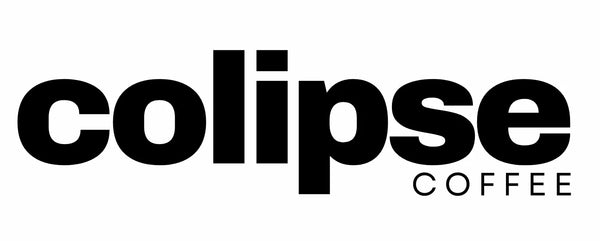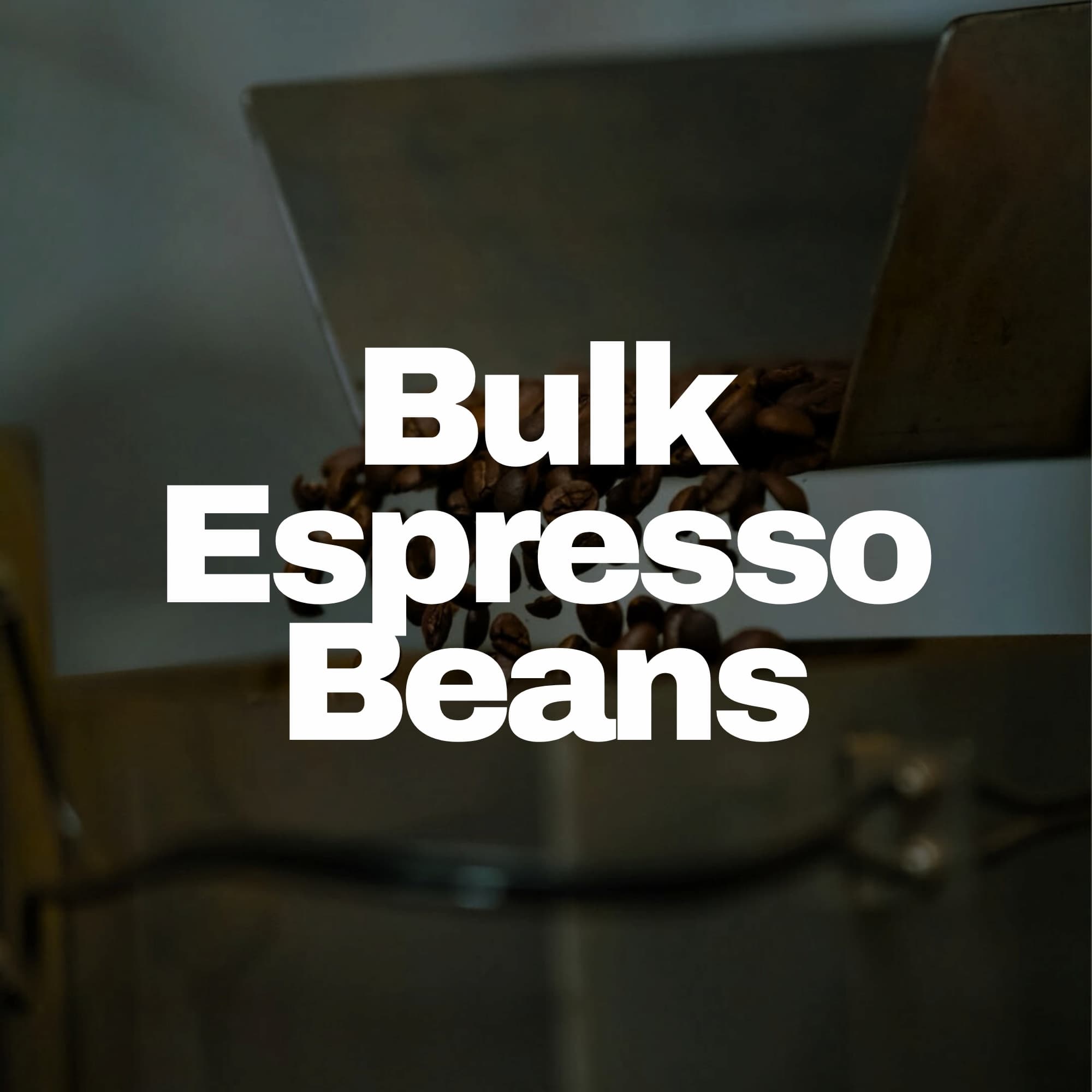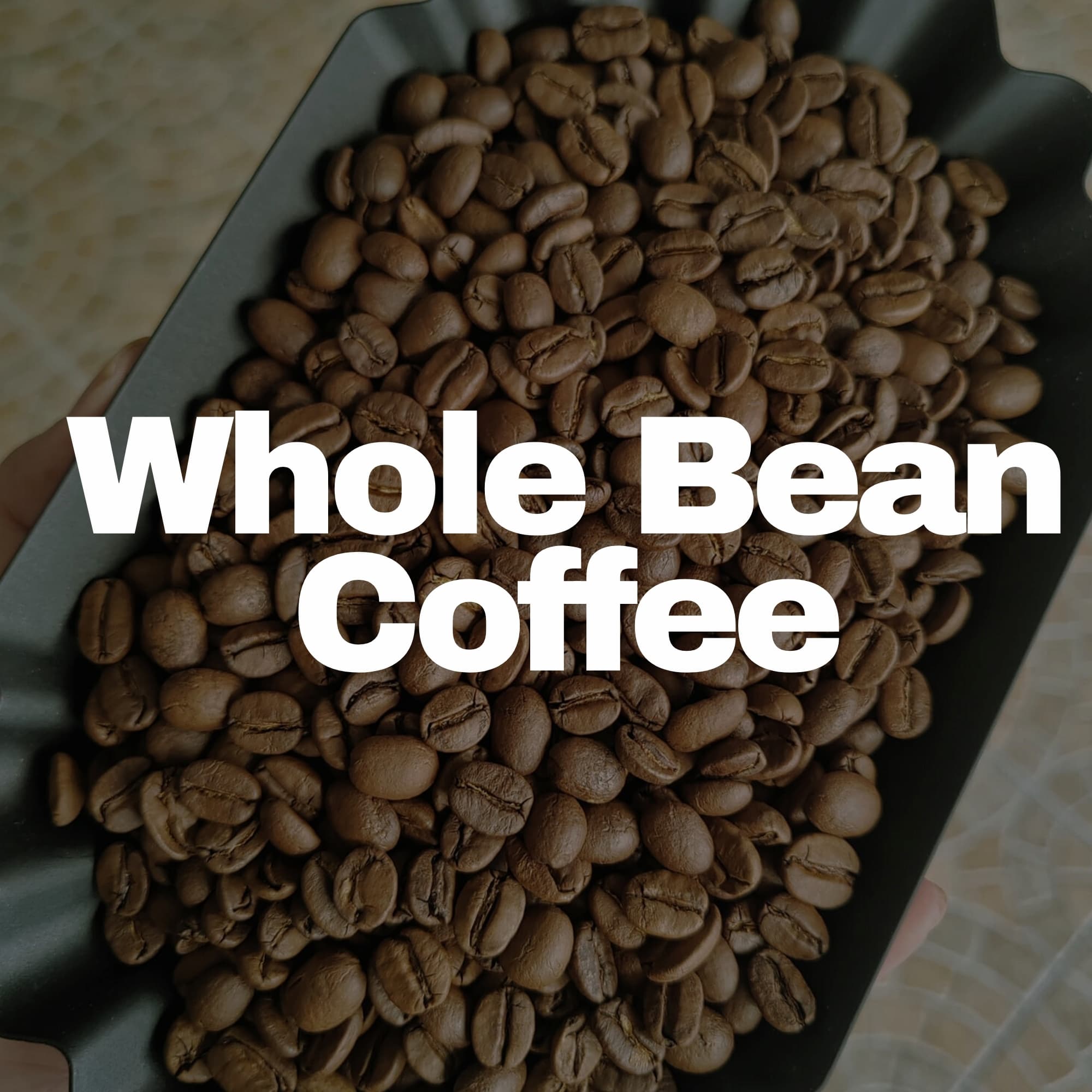-
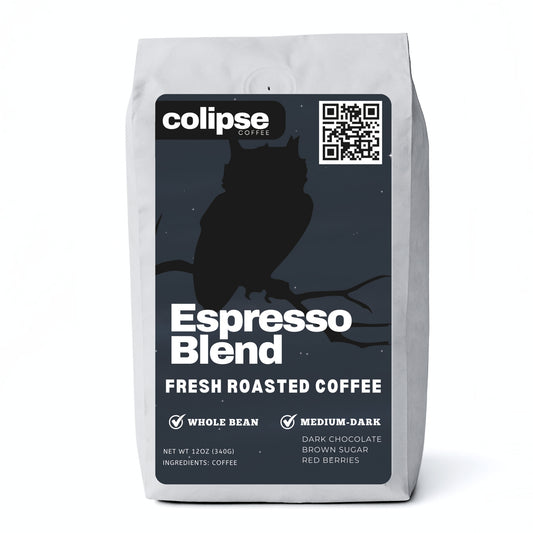 Sale
SaleEspresso Blend Coffee
Regular price From $23.99 USDRegular priceUnit price per$24.99 USDSale price From $23.99 USDSale -
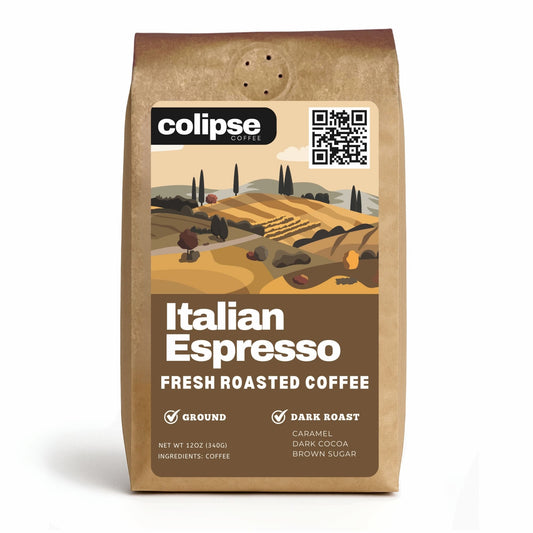 Sale
SaleItalian Espresso Coffee Beans
Regular price From $20.99 USDRegular priceUnit price per$22.99 USDSale price From $20.99 USDSale -
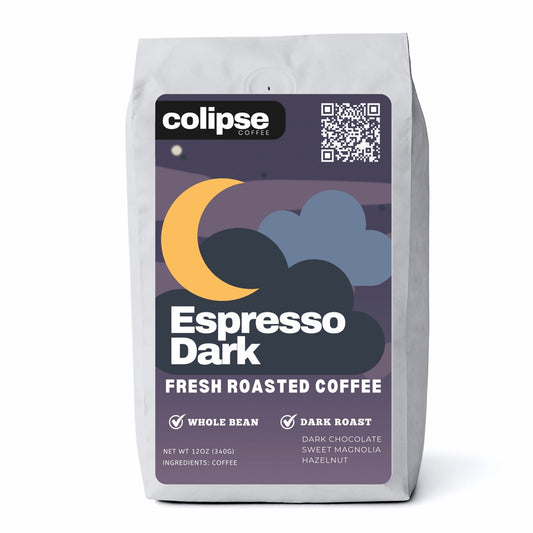 Sale
SaleEspresso Dark Roast Coffee Beans
Regular price From $21.99 USDRegular priceUnit price per$27.99 USDSale price From $21.99 USDSale -
 Sale
SaleColombian Espresso Coffee Beans
Regular price From $23.50 USDRegular priceUnit price per$27.99 USDSale price From $23.50 USDSale -
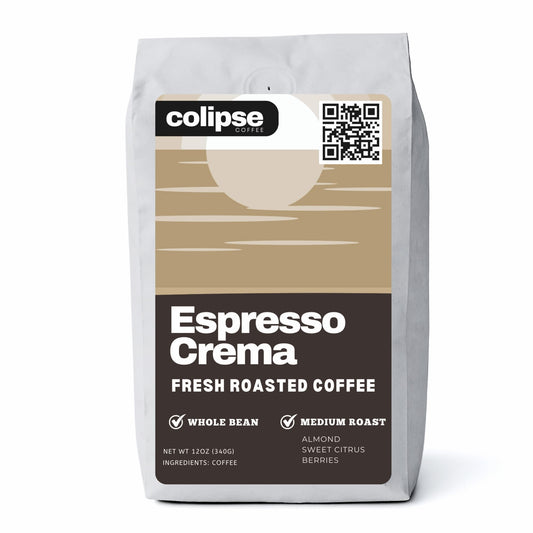 Sale
SaleCrema Espresso Medium Roast Coffee Beans
Regular price From $21.99 USDRegular priceUnit price per$24.99 USDSale price From $21.99 USDSale -
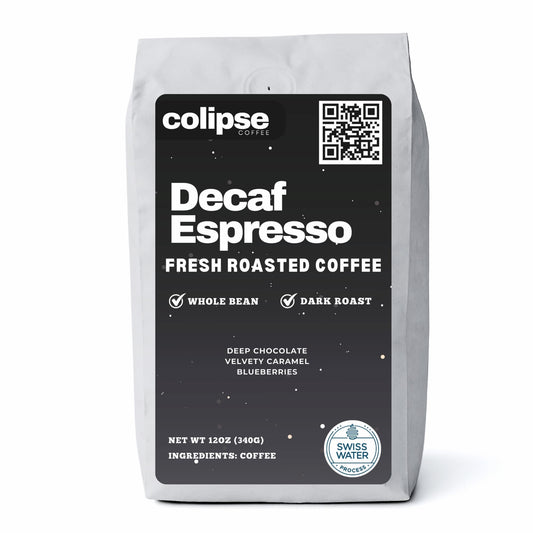 Sale
SaleDecaf Espresso Beans Swiss Water® Process
Regular price From $23.50 USDRegular priceUnit price per$24.95 USDSale price From $23.50 USDSale -
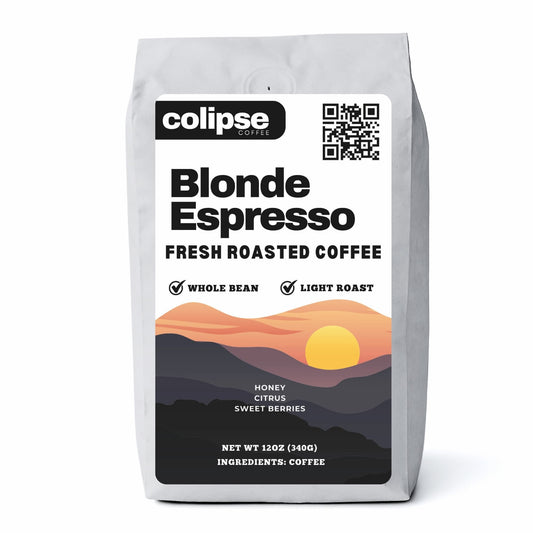 Sale
SaleBlonde Espresso Beans
Regular price From $22.50 USDRegular priceUnit price per$24.99 USDSale price From $22.50 USDSale -
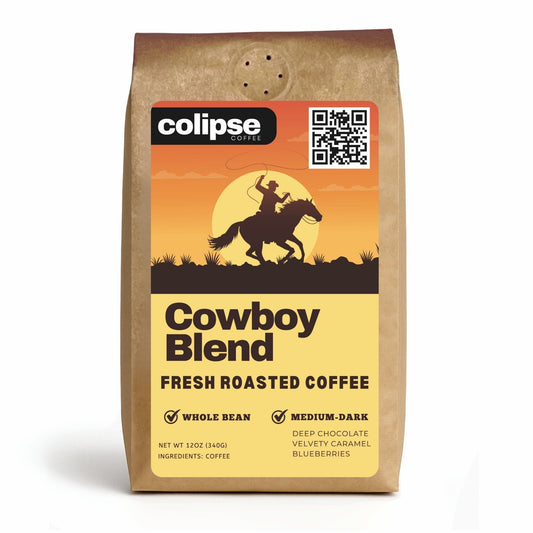 Sale
SaleCowboy Blend Coffee
Regular price From $20.99 USDRegular priceUnit price per$24.50 USDSale price From $20.99 USDSale -
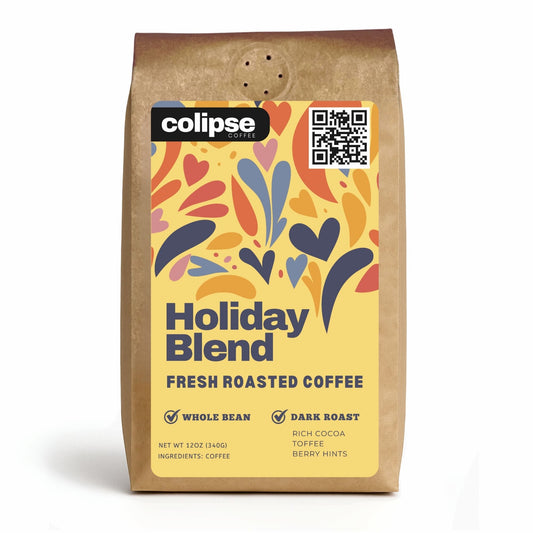 Sale
SaleHoliday Blend Coffee
Regular price From $20.99 USDRegular priceUnit price per$24.99 USDSale price From $20.99 USDSale -
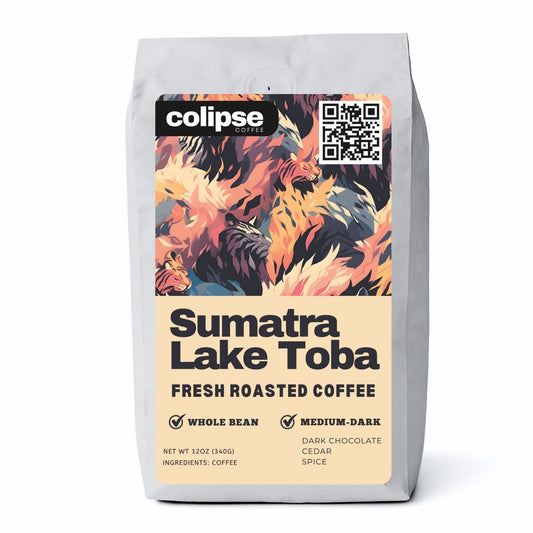 Sale
SaleSumatra Coffee Beans
Regular price From $21.99 USDRegular priceUnit price per$25.99 USDSale price From $21.99 USDSale -
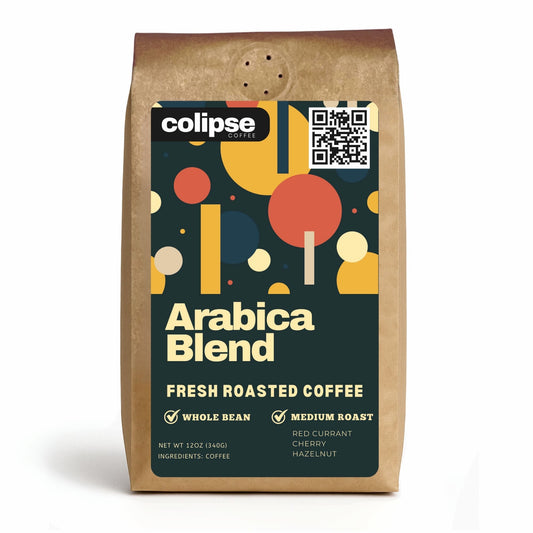 Sale
SaleArabica Blend Coffee
Regular price From $20.99 USDRegular priceUnit price per$24.99 USDSale price From $20.99 USDSale -
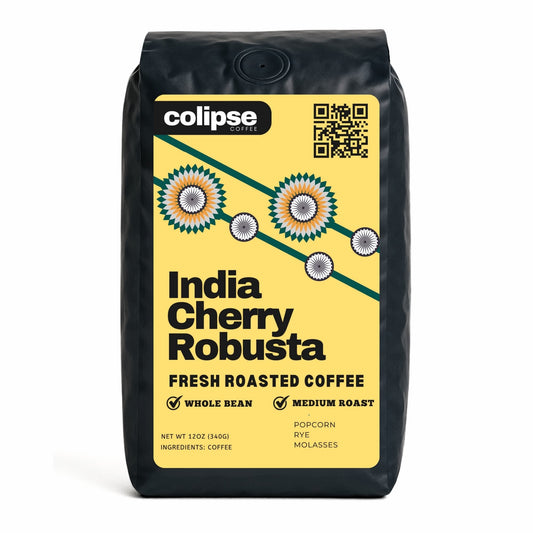 Sale
Sale100% Cherry Robusta Coffee Beans
Regular price From $22.99 USDRegular priceUnit price per$24.50 USDSale price From $22.99 USDSale
Best Coffee Beans for Espresso: Selection Criteria
Roast Date Freshness
Fresh roasted espresso beans (ideally within 2-14 days) preserve the oils and CO2 needed for rich crema. At Colipse Coffee, every bag is roasted to order and shipped within 24 hours.
Roast Profile Optimization
The best espresso beans are roasted specifically for high-pressure extraction. Our espresso roasts are developed to:
- Produce thick, golden crema
- Balance sweetness and body
- Extract evenly without bitterness
- Work across brew ratios (ristretto to lungo)
Bean Quality (Specialty Grade)
We source only specialty-grade coffee beans (82+ cupping score) from sustainable farms. Higher quality beans = cleaner flavors, better extraction, more forgiving dial-in.
Blend vs Single Origin
- Espresso Blends: Consistent flavor, balanced across seasons, forgiving extraction
- Single Origin Espresso: Distinct character, seasonal variation, showcases terroir
Machine Compatibility
Our espresso coffee beans work perfectly in:
- Traditional espresso machines (Breville, Gaggia, Rancilio)
- Super-automatic machines (DeLonghi, Jura)
- Manual machines (Flair, ROK, La Pavoni)
- Moka pots and AeroPress
Choose Your Espresso Roast Level

- Bold, intense flavor
- Lower acidity
- Heavy body
- Strong chocolate/caramel notes
- Forgiving extraction
Best for:
- Traditional Italian-style espresso
- Milk-based drinks (cuts through milk)
- Beginners (easier to dial in)
- Those who prefer strong coffee

- Balanced sweetness and body
- Moderate acidity
- Complex flavor development
- Origin character + roast development
- Versatile extraction
Best for:
- Espresso lovers who want both sweetness and body
- Single or double shots
- Multiple drink types
- Year-round consistency

- Bright acidity
- Fruity/floral notes
- Tea-like body
- Origin-forward flavors
- Precise extraction needed
Best for:
- Straight espresso shots
- Lighter, nuanced shots
- Americanos
- Experienced home baristas

Fresh Roasted Espresso Beans: Why It Matters
Unlike grocery store coffee that sits for months, every bag of Colipse espresso beans is:
- Roasted only after you order
- Shipped within 24 hours
- Delivered at peak freshness (3-7 days post-roast)
- Perfect for espresso extraction
The difference? Fresh espresso beans contain the oils and CO2 that create rich, golden crema and balanced extraction. Stale beans produce weak, thin shots.
Questions on Choosing Top Rated Espresso Beans
Find answers to common questions about selecting the right espresso beans.
Espresso beans and coffee beans are the same botanical product—there's no special "espresso plant." The difference lies in the roast profile and intended use.
Espresso beans are roasted specifically for high-pressure extraction in espresso machines. They're typically roasted darker and longer to:
- Develop oils that create crema
- Build body that holds up to intense extraction
- Balance acidity (darker roasts = less acidity)
- Create chocolate/caramel flavors
Regular coffee beans can be any roast level and are often roasted to preserve origin characteristics for drip, pour-over, or French press brewing.
Can you use regular coffee beans for espresso? Yes, technically any coffee can be used in an espresso machine, but beans roasted specifically for espresso will give you:
- Better crema formation
- More balanced extraction
- Consistent results
- Flavors optimized for concentrated shots
At Colipse Coffee, our espresso coffee beans are roasted with espresso extraction in mind, designed to produce rich, balanced shots with thick crema every time.
The best espresso beans depend on your personal taste preferences and how you drink espresso, but here's what to look for:
For Traditional Espresso Lovers:
- Dark roast espresso beans like our Dark Espresso Blend
- Bold, chocolate-forward flavors
- Heavy body, low acidity
- Thick crema production
- Works beautifully in milk drinks
For Balanced Espresso:
- Medium roast like our Classic Crema Espresso Blend
- Sweet caramel notes with chocolate undertones
- Versatile (great straight or with milk)
- Consistent extraction across brew ratios
For Complex, Bright Espresso:
- Single origin medium roasts like our Blonde Espresso
- Fruity, floral notes
- Tea-like body
- Best enjoyed as straight espresso
Universal Quality Markers:
- Fresh roasted (ideally within 2 weeks)
- Specialty grade (82+ cupping score)
- Roasted specifically for espresso
- Positive customer reviews (real extraction results)
- Transparent sourcing (know where your beans come from)
At Colipse Coffee, every bag is roasted on demand and shipped fresh—you'll taste the difference in every shot.
Yes, you can use regular coffee beans in an espresso machine, but the results will vary significantly based on the roast profile:
Will Work (But Not Ideal):
Medium roast coffee beans designed for drip coffee can technically be extracted as espresso. You might get:
- Thin, light-colored crema
- More acidity (can taste sour)
- Unbalanced extraction
- Flavors designed for dilution (too intense when concentrated)
May Not Work Well:
Light roast coffee beans:
- Very difficult to extract evenly
- Often taste sour or grassy
- Minimal crema formation
- Requires advanced dialing in
Best Espresso Coffee Beans:
Use coffee beans roasted specifically for espresso:
- Optimized roast development for pressure extraction
- Designed to produce crema
- Balanced acidity and body for concentrated shots
- Easier to dial in (more forgiving)
The Bottom Line: While you can use any coffee beans for espresso, you'll get significantly better results with espresso-specific roasts. Our espresso coffee beans are roasted with precise temperature and timing curves designed specifically for espresso machines—resulting in consistently excellent shots.
Grinding espresso beans requires precision. Grind size is the most important variable in espresso extraction, directly affecting flow rate, flavor balance, and crema.
Grind size
- Fine grind (similar to powdered sugar, not flour-fine)
- Particles should clump slightly when pressed
- Finer than drip coffee, but not a powder
Grinder requirements
- Burr grinder is essential (blade grinders lack consistency)
- Stepped or stepless adjustment
- Ability to make micro-adjustments
- Examples: Baratza Encore (entry), Niche Zero (mid), Eureka Mignon (high-end)
Grinding process
- Dose 18–20 g of espresso beans for a double shot
- Grind immediately before brewing (flavor degrades within minutes)
- Distribute grounds evenly in the portafilter
- Tamp with consistent pressure (about 30 lbs)
Dialing in espresso
- Start with a fine grind
- If extraction is under 20 seconds, grind finer
- If extraction exceeds 35 seconds, grind coarser
- Target: 25–30 seconds for a 36–40 g yield
Pre-ground option
For those without a grinder, pre-ground espresso is available:
- Ground to order for freshness
- Optimized for most home espresso machines
- Best used within 1–2 weeks
- Not as ideal as whole bean, but far better than grocery-store coffee
Breville espresso machines such as the Barista Express, Bambino Plus, and Oracle Touch perform best with medium to dark roast espresso beans that extract evenly and produce stable crema.
Optimal bean characteristics
- Medium-dark to dark roast for more forgiving extraction
- Fresh roasted (ideally within 2–3 weeks for best crema)
- Not overly oily, which can clog Breville’s built-in grinder
- Blends or single origins both work well
Recommended Colipse coffees for Breville
Dark Espresso Blend (Dark Roast)
- Forgiving to dial in
- Excellent crema production
- Compatible with pressurized and non-pressurized baskets
- Chocolate and caramel flavor notes
Espresso Blend (Medium-Dark Roast)
- Balanced extraction
- Ideal for milk-based drinks
- Sweet, smooth finish
- Consistent results shot after shot
Breville-specific tips
- Use whole beans to take advantage of the built-in grinder
- Start with grind setting 5–7 and adjust as needed
- Fresh beans deliver noticeably better results
- Single-walled baskets provide greater control than pressurized baskets
Breville owners prefer these espresso beans because they are roasted specifically for home espresso machines, making it easier to achieve café-quality shots without commercial equipment.
Espresso beans have different freshness windows depending on their use. Here is what to expect after your roast date:
Days 3-7 Post-Roast:
- Beans are "resting" and degassing CO2.
- Still very fresh, but sometimes too fresh for stable brewing.
- Can produce channeling or over-pressure during extraction.
- Wait if possible for the gas to settle.
Days 7-21 Post-Roast: PEAK WINDOW
- Absolute best for espresso quality.
- CO2 has stabilized for consistent shots.
- Flavors are fully developed and vibrant.
- Crema production is at its maximum.
Days 21-45 Post-Roast:
- Still good, but beginning a slow decline.
- Noticeable decrease in crema thickness.
- Flavors may begin to flatten slightly.
After 45 Days:
- Significant staleness and thin/minimum crema.
- Muted or "papery" flavors.
- Not recommended for premium espresso.
How to Maximize Freshness:
- Buy fresh roasted: That's why we roast to order at Colipse.
- Store properly: Use an airtight container (like Airscape or Fellow Atmos) in a cool, dark place. Avoid the refrigerator or freezer.
- Buy appropriate quantities: Aim for a 1-2 week supply to ensure you're always brewing fresh.
- Don't pre-grind: Grind your beans immediately before use to lock in the aromatics.
While both start as the same premium roasted beans, the choice between whole bean and ground espresso significantly impacts your flavor, freshness, and brewing control.
WHOLE BEAN ESPRESSO ( RECOMMENDED)
Pros:
- Maximum Freshness: Stays at peak flavor for weeks rather than days.
- Superior Aroma: Essential oils and aromatics remain trapped inside the bean until the moment of grinding.
- Dial-In Capability: Allows you to adjust the grind size perfectly for your specific machine's pressure.
Cons: Requires an investment in a quality burr grinder and an extra step in your morning routine.
Best For: Serious home baristas and anyone drinking multiple shots per week who wants the café-quality experience.
GROUND ESPRESSO BEANS
Pros:
- Instant Convenience: Ready to use immediately with no extra equipment needed.
- Consistency: We use professional-grade mahlkönig grinders to ensure a precise, uniform size.
Cons: Rapid oxidation means flavor and crema begin to fade within 48 hours of opening the bag.
Best For: Beginners, convenience-focused users, or those without a high-end burr grinder.
The Bottom Line: If you are serious about espresso, Whole Bean is the only way to experience the full potential of the coffee. If you must buy ground, we recommend ordering smaller quantities (320g) and using them within 7-10 days.
Note: At Colipse Coffee, we grind to order only moments before shipping. While this is far superior to grocery store coffee, whole bean will always provide the most dramatic flavor profile.Choosing between organic and conventional espresso beans often comes down to balancing health priorities with taste expectations. Here is why organic certification matters:
Benefits of Organic Espresso
1. Health and Purity
- Grown without synthetic pesticides or chemical fertilizers.
- Cleaner cup with fewer chemical residues.
- Often subjected to more rigorous testing standards.
2. Environmental Impact
- Promotes sustainable farming and soil health.
- Reduces groundwater contamination from chemical runoff.
- Supports local biodiversity on coffee estates.
3. Farmer Welfare
- Protects farmers from exposure to toxic chemicals.
- Often paired with Fair Trade practices and premium pricing.
4. Flavor Profile
- Allows the natural origin characteristics to shine through.
- Cleaner, sweeter taste with no "chemical" aftertaste.
Trade-offs to Consider:
- Cost: Certification and sustainable practices are more expensive, leading to a higher price point.
- Yields: Lower yields can sometimes affect seasonal availability.
- Score vs. Label: Organic certification is about growing; cupping score is about taste. They don't always overlap.
The Bottom Line: Organic certification ensures cleaner, more ethical growing practices. However, if flavor is your absolute priority, the cupping score, processing, and roast date remain the most critical factors for a perfect shot.
At Colipse Coffee, we offer both organic and conventional specialty-grade espresso beans, all sourced from ethical farms with high cupping scores. Choose organic for peace of mind about farming practices, or focus on cupping score and freshness for the ultimate flavor experience.
Where you buy your espresso beans is the single biggest factor in determining the quality of your crema and flavor. Here is how different sources compare:
Best Options: Freshness Guaranteed
1. Specialty Coffee Roasters (like Colipse Coffee)
- Roast-to-Order: Beans are roasted only after you buy, ensuring maximum freshness.
- Transparency: Full details on origin, farm, and cupping scores (82+).
- Expertise: Small-batch roasting handles beans with precision.
2. Local Coffee Roasters
- Great for supporting local business and seeing beans in person.
- Always check the specific roast date on the bag before purchase.
Okay in a Pinch: Specialty Grocery Stores
- Look for bags with a Roast Date (ignore "Best By" dates).
- Check for a one-way degassing valve.
- Be aware these are often already 3–6 weeks old.
Avoid: Regular Grocery and Big Box Stores
- Stale Content: Often sit on shelves for 2–6 months.
- Mass Produced: Roasted for shelf stability, not flavor profile.
- Opaque Sourcing: Low-quality beans with no origin transparency.
What to Look For When Buying Best Coffee Beans for Espresso?
- Roast date printed
- One-way valve
- Whole bean option
- Origin info
- Roaster location
- Vacuum sealed
Why Buy Espresso Beans Online from Colipse Coffee?
We bridge the gap between world-class roasting and doorstep convenience:
- Roasted only after you order.
- Shipped within 24 hours.
- Arrives 3–7 days post-roast (the absolute peak window).
- 30-day satisfaction guarantee.
The difference is night and day—once you taste truly fresh espresso, you'll never go back.
Best Espresso Beans Reviews
What Espresso Lovers Are Saying About Colipse Coffee
Sarah M
Verified Buyer
Best espresso beans for my Breville Barista Express! I've tried a dozen different beans, and these are hands-down the best. The crema is incredible, and dialing in was so easy compared to grocery store coffee. The Classic Espresso Blend cuts through milk perfectly in my lattes. Will definitely reorder!
2 days ago
Michael K
Verified Buyer
Finally, actually FRESH espresso beans. I've never had espresso beans this fresh from an online order. You can smell the difference when you open the bag, and the shots are noticeably better than anything I've bought locally. The Italian Espresso blend is now my daily driver.
5 days ago
David L
Verified Buyer
Huge upgrade from Starbucks espresso beans. I was buying Starbucks beans from Target, and honestly didn't know what I was missing. These espresso coffee beans are in a completely different league. Smoother, more complex flavors, and my wife even noticed the difference in her cappuccinos. Worth every penny.
1 week ago
